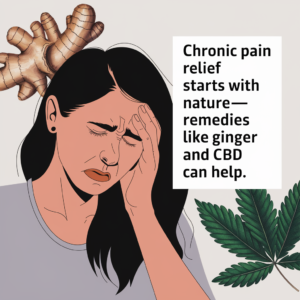
Chronic pain, characterized by persistent or recurring discomfort lasting beyond the expected healing time, can significantly impact one’s quality of life. In this article, we delve into the complex web of chronic pain causes, exploring various factors that contribute to its development. By understanding these underlying causes, we can gain insight into the condition and work towards effective pain management strategies.

- Physical Injuries and Trauma: Discover how physical injuries and trauma, such as accidents, falls, or sports-related incidents, can trigger chronic pain. Learn about the potential long-term effects of musculoskeletal damage, nerve injuries, and post-surgical pain syndromes.
- Medical Conditions and Diseases: Explore the connection between chronic pain and underlying medical conditions or diseases. Investigate conditions such as fibromyalgia, arthritis, multiple sclerosis, endometriosis, neuropathy, and cancer. Understand how these conditions can cause persistent pain and learn about management strategies specific to each condition.
- Nervous System Disorders: Delve into the realm of chronic pain caused by disorders affecting the nervous system. Uncover the role of conditions like complex regional pain syndrome (CRPS), post-herpetic neuralgia, migraines, and spinal cord injuries. Gain insight into the mechanisms through which these disorders generate chronic pain.
- Inflammation and Autoimmune Responses: Learn about the relationship between chronic pain and inflammation. Explore how autoimmune diseases, such as rheumatoid arthritis, lupus, or inflammatory bowel disease, can contribute to ongoing pain due to persistent immune system activation.
- Psychological and Emotional Factors: Understand the intricate link between chronic pain and psychological and emotional well-being. Examine how conditions like depression, anxiety, stress, and post-traumatic stress disorder (PTSD) can influence pain perception and exacerbate chronic pain symptoms.
- Postural and Mechanical Factors: Explore how poor posture, repetitive strain injuries, and biomechanical abnormalities can contribute to chronic pain. Discover how imbalances, misalignments, and structural issues impact the musculoskeletal system, leading to persistent discomfort.
- Lifestyle Factors and Habits: Investigate the role of lifestyle factors in chronic pain development. Explore how sedentary behavior, obesity, poor nutrition, lack of exercise, smoking, and substance abuse can contribute to pain conditions or exacerbate existing ones.
- Genetic and Hereditary Influences: Discover the potential genetic predispositions to chronic pain. Explore how certain gene variations can influence pain sensitivity, response to medications, or the development of specific pain conditions.
Conclusion: Chronic pain arises from a complex interplay of various factors. By understanding the diverse causes, we can approach chronic pain management with a comprehensive perspective. Remember, each individual’s pain experience is unique, and addressing the underlying causes requires a personalized approach. Consulting healthcare professionals, seeking appropriate diagnostic evaluations, and implementing tailored pain management strategies are key to alleviating chronic pain and improving overall well-being.
As an Amazon Associate we earn from qualifying purchases through some links in our articles.




